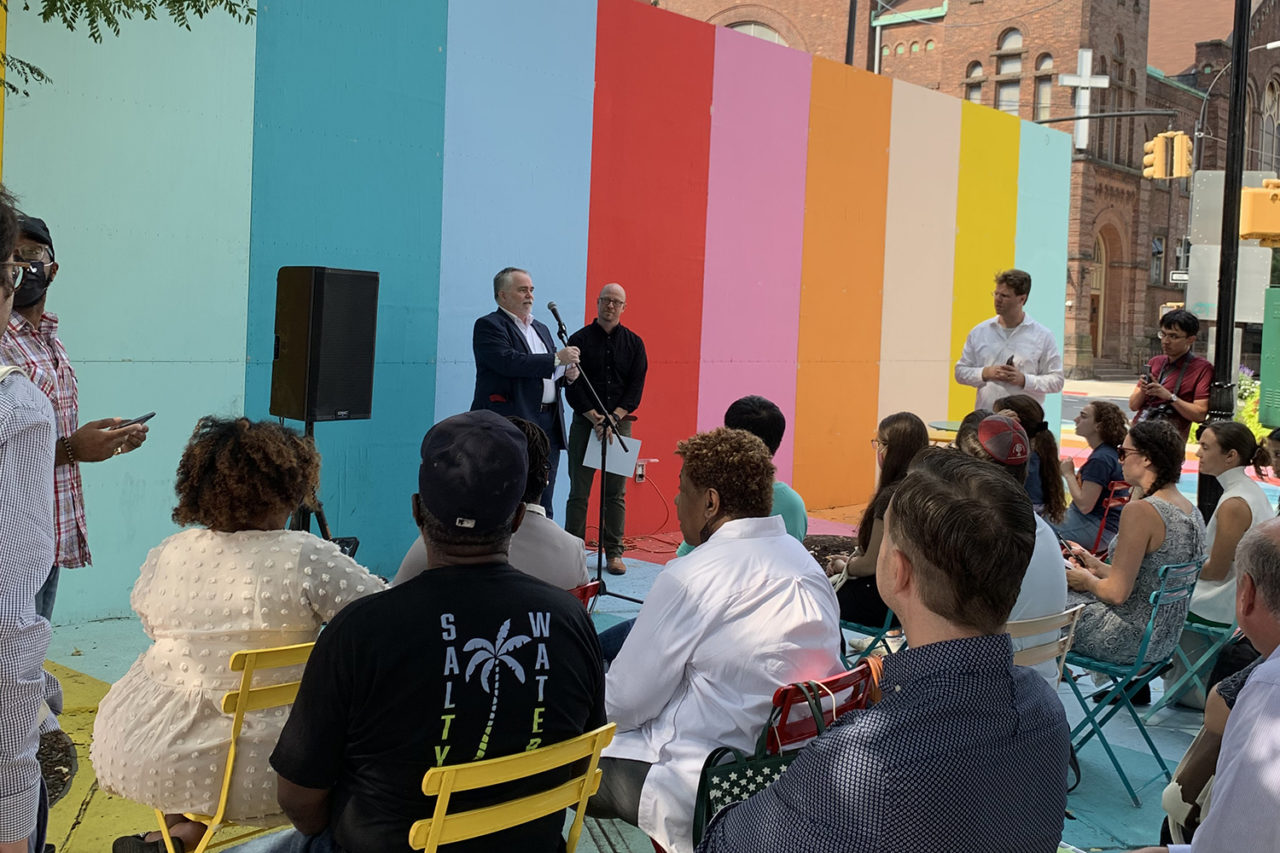by: Adam Roberts
After years of advocacy, the effort to limit the design of fossil fuel-powered buildings in New York City is making major headway. Months ago, Int. 2317 was introduced in the New York City Council, which would limit fossil fuel use in new and retrofitted buildings. Architects have long argued that fossil fuel use in buildings is a significant contributor to climate change, is not a reliable source of energy, and creates hazardous living and working conditions. AIANY was an early proponent of the bill.
AIANY has continued pressing council members to pass Int. 2317. Last month, AIANY President Ken Lewis, AIA, authored an op-ed in the Daily News explaining how limiting fossil fuel use in buildings is not only beneficial but feasible. Alloy Development, which is run by AIANY members, recently hosted a rally in support of the bill at their under-construction fossil fuel-free tower. AIANY and New York Passive House co-hosted the rally, presenting a unified front from design professionals in support of the bill. All of these actions have come in conjunction with the work of climate justice advocates, who are leading the fight to mitigate the impacts of climate change and reduce air pollution in marginalized communities.
Pushback to the bill has come largely from developers and building owners. While not denying how fossil fuels contribute to climate change, air pollution, or fires, the Real Estate Board of New York has sought to slow down the implementation of the bill. While architects and climate justice advocates have argued that nearly all buildings can be affordably designed without a reliance on fossil fuel, developers and owners have claimed this is not possible with the technology and design techniques currently available.
The fight over Int. 2317 has come amidst the damage caused by Hurricane Ida, which has refocused public attention on the dangerous nature of gas hookups in buildings. Gas fires and explosions raged uncontrollably throughout the Northeast in the immediate aftermath of the storm, as flooding triggered several gas leaks. In the south, oil and gas extraction facilities were battered, causing extensive environmental damage.
A hearing on Int. 2317 is likely to occur in the near future, as nearly a majority of the City Council has signed on as sponsors. This will provide an opportunity for architects and others to express their strong support for the bill. AIANY will keep its members updated on how they can be involved in helping to pass it.
Policy Points:
- Join us for the 2021 ASLA-NY, AIANY, APA-NY Annual Conference, taking place September 23-24. This year’s conference seeks to bring architects, landscape architects, and planners together to explore new paradigms for designing in a post-pandemic city. guided by new and necessary priorities to achieve a healthier and more just New York region.








